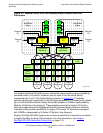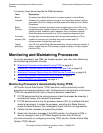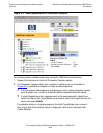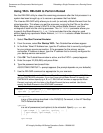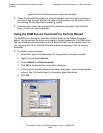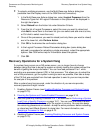
Processors and Components: Monitoring and
Recovery
HP Integrity NonStop NS-Series Operations Guide—529869-005
9-10
Halting One or More Processors
The best manual recovery operation for your processor halt scenario depends on the
type of halt. You should record the halt information (as described in Identifying
Processor Problems on page 9-7), and contact your service provider to help you
determine the appropriate course of action.
This section describes the various options for Dumping a Processor to Disk and
Reloading a Single Processor on a Running Server that you might be directed to use.
Halting One or More Processors
To place a selected processor or processors in a halt state and set the status and
registers of the processor or processors to an initial state:
1. Log on to the OSM Low-Level Link.
2. On the toolbar, click Processor Status button.
3. In the Processor Status dialog box, select the processor to be halted or select all
the processors to halt all of them.
4. Select Processor Actions>Halt.
5. Click Perform action.
6. A message box appears and asks whether you are sure you want to perform a halt
on the selected processor or processors. Click OK.
Reloading a Single Processor on a Running Server
Sometimes one or more processors in a running server are not operating. For
information on how to determine whether a processor is operating, see Monitoring
Processor Performance Using ViewSys on page 9-7.
Unlike NonStop S-series, you don’t always have to wait until you dump the processor
before reloading it. This section describes how, when appropriate, to exclude the
processor element (PE) from one NonStop Blade Element during the reload operation,
so you can get the rest of the processor running, take the dump, then reintegrate the
PE back into the running processor.
After you have determined that a processor is not operating, check that the processor
is halted. If it needs to be halted, see Halting One or More Processors on page 9-10).
Collect information about the reason for the halt (as described in Identifying Processor
Problems on page 9-7) to send to your service provider along with the dump file. In the
Low-Level Link Processor Status dialog box, write down the halt code and status
message for the processor.
Your options for reloading a processor on a running server are:
•
Using TACL RELOAD to Perform Reload on page 9-11
•
Using the OSM Service Connection to Perform Reload on page 9-13
Following the reload, if TFDS is not configured to take the dump automatically, you can
perform a dump of the omitted PE while normal operations resume on the reloaded
PEs within that logical processor. See the Dumping a Processor to Disk on page 9-15.




